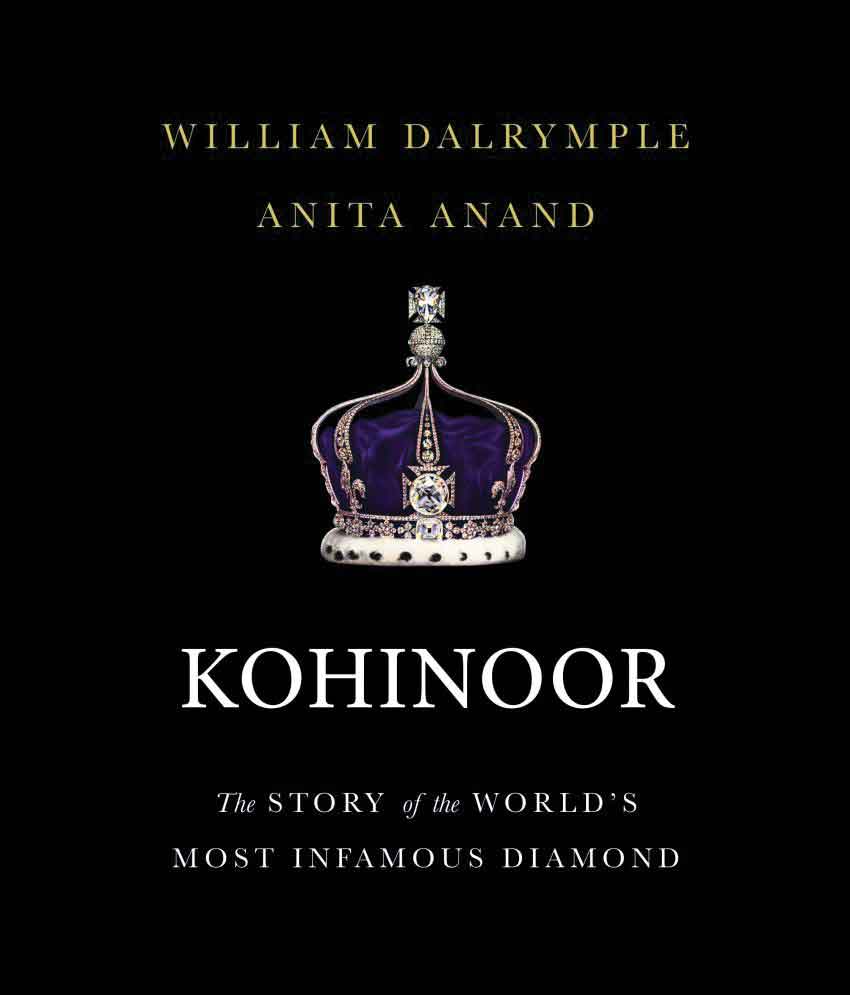No one does historical narratives quite like William Dalrymple, weaving colourful stories, folklore and anecdotes with historical facts grounded in painstaking research. The result is a spellbinding work of non-fiction, as informative as any history book and as engaging as any romantic thriller. Kohinoor is no different when it comes to having a gripping story backed by extensive facts, peppered with entertaining scandals and myths and enlivened by enigmatic characters which leap out of the pages like apparitions come alive. Suitably matched with Anita Anand, whose debut work Sophia was a remarkably astute, poignant and captivating biography of Ranjit Singh’s granddaughter, the duo uncover and trace the history of arguably the most famous diamond in the world, the Kohinoor. Offering a treasure trove of delightful anecdotes and vivid character sketches, the pen flows seamlessly across time and geography to paint the tumultuous journey of the diamond while also attempting to clear the fog of mystery which clouds the most sought-after and fought over gem in subcontinental history.
The novel is set in two parts; the first- tracking its journey across the hot plains of Punjab, skipping over Iran to the forbidding mountains of Kabul till it reaches Ranjeet Singh -is written by Dalrymple while the latter half, chronicling the life and fall of his young son and heir Duleep Singh and journey of the young maharaja and the diamond to England is penned by Anita Anand. While in the first half, the story is tethered by quotes and clarifications on historical ambiguities, the second half captures a clearer picture with the characters appearing larger than their stories.
For a historian, the greatest challenge is to remain objective and not let personal judgment or biases manipulate historical facts uncovered through research and verified by authentic sources. For a storyteller, the bigger challenge is to show events and people not shackled to the pages but conjured up in the heightened imaginations of the readers with effortless ease. In so far, the Kohinoor is infinitely readable, you can sail through the entire book in one go without feeling you are being bombarded with a history lecture. Dexterously leading us through the minds and hearts of characters like a trip down someone else’s memory lane, it is a reflection of our greatest strengths and weaknesses magnified by the trappings of wealth, power and glory. Kohinoor is an illustration of the illusive and elusive desires we are wont to chase, unmindful of the havoc and self-destruction we wreak along the way.
The most touching story is that of boy king Duleep Singh and his courageous mother Jindan, the rightful heirs of the throne and the stone, who were duped into giving up their land and their wealth to the British, with the young King stripped of all except a ceremonial title and consigned to the care of British wards while his headstrong mother was locked up to prevent her from inciting a rebellion among loyal Sikhs for her son’s cause. The touching bewilderment of a boy with no one to turn to for help, the gentle courtesy of a young man schooled into obedience and obeisance by- and to- those he owed all his losses, the wily ambition and fierce protection of a maharani turned into the impotent fury and helpless grief of a mother, and the fiercely clashing loyalties and duties of a conflicted maharaja struggling to comprehend and reconcile his past and present- Anand writes with quiet empathy and gentle honesty to show the hitherto little known human side of the story of the diamond.

Much like the fire of the gym hidden inside and not immediately discernable to the eye, as the novel progresses, this tragic and hopeful history of the Kohinoor is also seen to be the tale of the country whence it originated from. As a metaphor for the subcontinent, it is striking but one neither blatant nor forced. As a symbol of royalty, it signifies the strength of the ruler who owns and wears it- denoting power, wealth and virility. As the rumoured curse of the stone shadows it wherever it goes, ultimately bringing destruction to whoever possesses it, so do deceit and death always hover like an unsmiling angel over the shoulders of those who rise up in the world, gaining riches and influence as rapidly as they acquire enemies and traitors. From adorning the famed peacock throne of the dreamy Shahjahan to the brutal warlord Nadir Shah, from the scholarly Shuja to the courageous Ranjit Singh’s armband, the Kohinoor not only changed hands and places but also fates of its owners. Ultimately taken by the British for Queen Victoria, the diamond was cut to smooth its roughness and give it the shine which they valued so highly but despite all the promises of retaining its size, the stone was left half of what it was- from the biggest diamond in the world to one of a hundred. No more fitting analogy could be used for the subcontinent controlled, plundered and then decimated by the British.
What lends this stellar work an air of unmistakable authority is the use of indigenous sources to ensure it does not stray from the truth. Layered with credible citations and alluring myths, it carefully sieves fact from fiction while writing a thriller replete with heroes and anti heroes, villains and rebels, maharajas and soldiers with a tantalizing dose of drama, deception, and destruction. With much of the history of the diamond being rooted in hearsay rather than authenticated facts, the story lacks the substance that has been Dalrymple’s hallmark in previous novels. The vague feeling of dissatisfaction stems from the inability of the authors to really dig deep and produce a historiographical gem. But what was lacking in research was more than made up for by the effortlessly winsome style of writing which sweeps across the subcontinent and thence to England, touching and tortuous, painful and perceptive. Even without a happy or decisive ending, this is a story that will stay with you long after the last page has been read.
![]()
TEXT: HIRA SALMAN










































